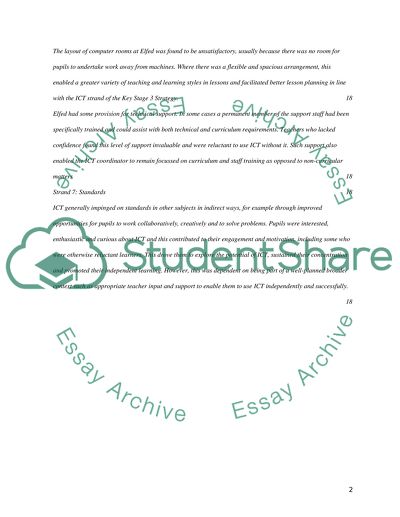Cite this document
(ICT Improvement at Elfed High School Assignment, n.d.)
ICT Improvement at Elfed High School Assignment. Retrieved from https://studentshare.org/education/1536341-using-an-ofsted-report-for-an-establishment-not-known-to-you-identify-possible-future-actions-to-be-taken-by-the-school-to-improve-performance
ICT Improvement at Elfed High School Assignment. Retrieved from https://studentshare.org/education/1536341-using-an-ofsted-report-for-an-establishment-not-known-to-you-identify-possible-future-actions-to-be-taken-by-the-school-to-improve-performance
(ICT Improvement at Elfed High School Assignment)
ICT Improvement at Elfed High School Assignment. https://studentshare.org/education/1536341-using-an-ofsted-report-for-an-establishment-not-known-to-you-identify-possible-future-actions-to-be-taken-by-the-school-to-improve-performance.
ICT Improvement at Elfed High School Assignment. https://studentshare.org/education/1536341-using-an-ofsted-report-for-an-establishment-not-known-to-you-identify-possible-future-actions-to-be-taken-by-the-school-to-improve-performance.
“ICT Improvement at Elfed High School Assignment”, n.d. https://studentshare.org/education/1536341-using-an-ofsted-report-for-an-establishment-not-known-to-you-identify-possible-future-actions-to-be-taken-by-the-school-to-improve-performance.


